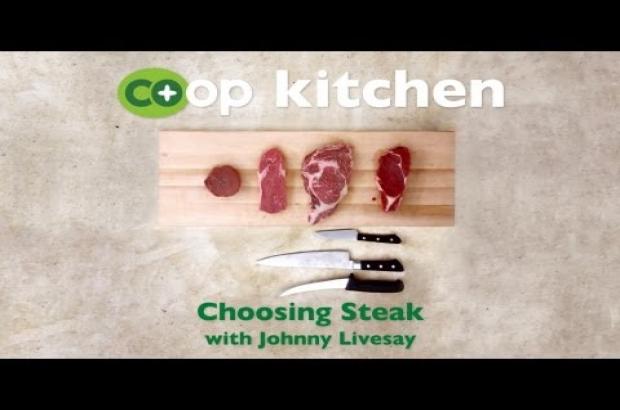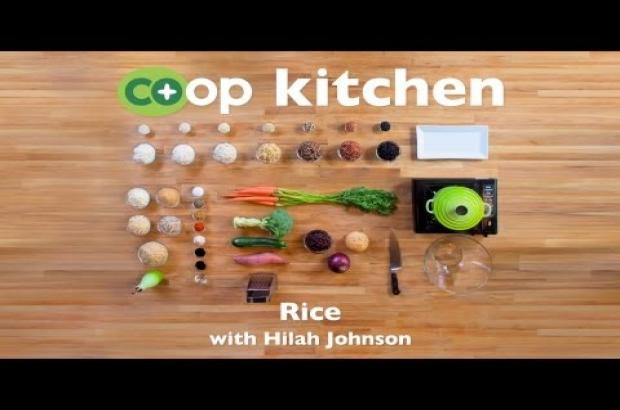Choosing Knives
A good knife can last you years with proper use and maintenance. Casey Wilcox provides an overview of one of the most important tools you need in your kitchen. He discusses three basic types of knives, how to properly handle them, and basic knife maintenance.
Find more Co+op Kitchen videos featuring information and easy recipes for making delicious meals at home, as well as handy hints from chefs and food enthusiasts who love sharing their passion for great food.
Video Transcript
Hi. My name is Casey Wilcox. I'm the executive chef of Justine's, a French brasserie.
Today we're going to talk about choosing the right knife. The knife is the most important tool you'll have in the kitchen. It's something that you'll use in almost anything you make, whether you're cooking it or just making a salad.
Parts of the knife
We'll talk now about the parts of the knife. This, of course, is the blade and tip.
Here's the tang of the knife. It's the steel that runs inside the handle. Some knives it's inside the wooden handle — you won't see it at all.
And another part of the knife is the bolster. It's kind of an added weight to the end of the blade. If you want to cut through some chicken bones or pumpkins, you can push through a little bit with the extra weight of the bolster.
Types of knives
Chef’s knives
If you're going to look for a knife, and it's going to be your only knife or your first knife, you're going to want to go with an 8-inch chef knife. A chef's knife is what you're going to use 90 percent of the time.
When you hold the chef's knife, you're going to want to grip it with two fingers, just above the heel of the knife, and then wrap the rest of the fingers in a relaxed grip around the handle. Feel how it feels in your hand. You should feel like you can be able to control every bit of the knife.
An 8-inch chef knife is the most popular and also easy to maintain. And it's what I use in the kitchen most of the time.
If you decided you're going to get your 8-inch chef knife, the two choices truly are between Japanese and German knives.
This is a traditional German knife. It's high-carbon steel. There is stainless mixed into it, so it will not stain. They're stouter and sturdier. Their edge moves from a finer point to a stouter point. So they will dull a little faster, but because of their even composition, they're easier sharpen, and they're less likely to become damaged.
The Japanese knives were traditionally made with a single edge, and this knife here is a good example of it. You can see the blade edge is all on this one side and nothing on the other. It makes for a thinner blade that is less damaging to food, but it's also a little more fragile.
Paring knives
The next most common knife in the kitchen is going to be the paring knife. They're going to be used for smaller tasks—things in your hand.
You're going to grip it with four fingers. I kind of leave one finger over the blade. The top finger kind of guides the blade, and the thumb is free.
Serrated knives
The other knife that you want to have in your kitchen for sure is a serrated knife. It's what you're going to go to for bread, or if you have something like a really ripe tomato. It does a little bit more damage to the edge, because you're doing that sawing motion, but you're not smushing food that's easily smushed.
I like to have something that has a curved edge, like a chef's knife, or an offset edge like this. But if you have a knife like this that doesn't have a curved or offset edge, you end up dragging your knuckles on the table, and you can't get all the way through something because you end up having an angle like this, where there's a gap underneath.
Sharpening knives
So, what you'll do at home to keep your knives sharpened between uses is you'll hone them with a steel. Hold the steel in your left hand, if you're right handed, and the knife in your right. And you're going to hold the knife just like you're going to cut with it. And the angle of edge is the angle that you would like to hold your knife on the steel, because what we're doing is restoring that angle. And you'll run it down the whole way and then the opposite side. And you want to get the whole edge of the blade. And what the steel does is as you run it along the side of the knife, it brings the whole edge back into a true straight edge.
Bottom line is there is no universally perfect knife. Go to a shop that lets you try them out, so you leave with something that you're happy with.
I'm Casey Wilcox for Co+op, stronger together.













